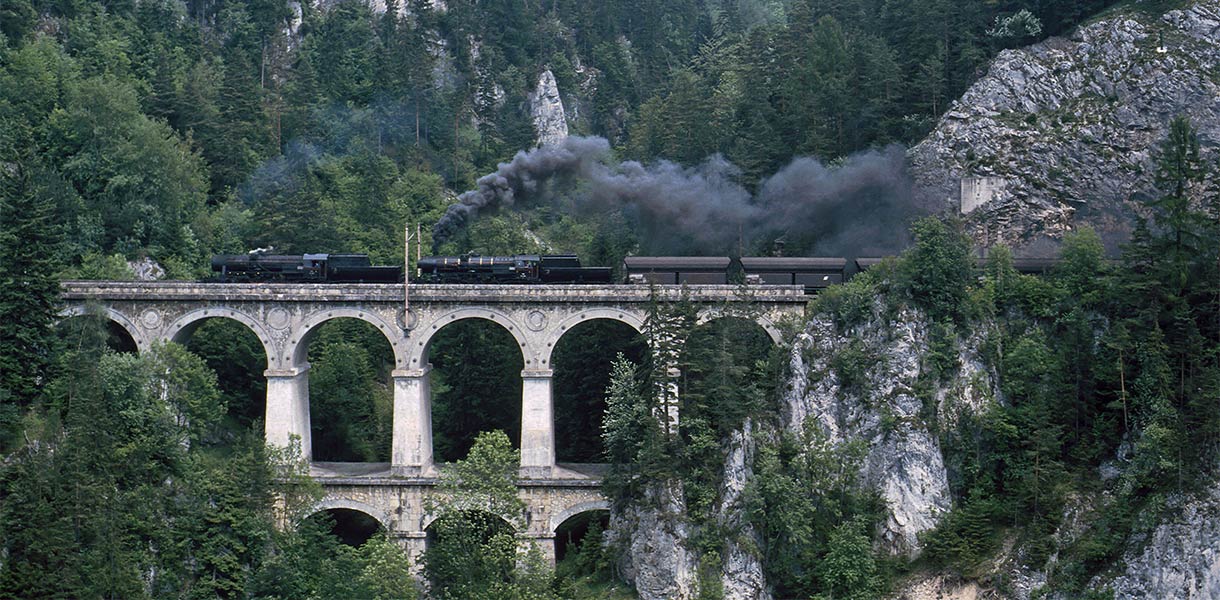The gateway to the UNESCO World Heritage Semmering Railway

Mürzzuschlag Station
Mürzzuschlag Station is the southern terminus of the Semmeringbahn. Originally the station was equipped with workshops, boilerhouses and a roundhouse. Today, the Mürzzuschlag location carries out preload service over the Semmering.
The facility – roundhouse and turntable, as well as locomotive assembly hall and traverser – played an importanat role in the history of technology and are, in their entirety, the last surviving ensemble from the early days of the railway. For this reason, the museum halls of the SOUTHERN RAILWAY Museum were listed as historically significant in 2006; since 2009, they have been located in the core zone of a UNESCO World Cultural Heritage Site.
Vision 2029 - Semmering Declaration


